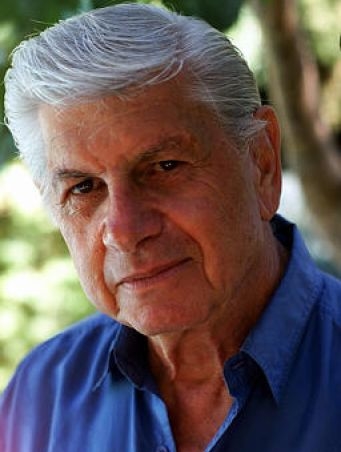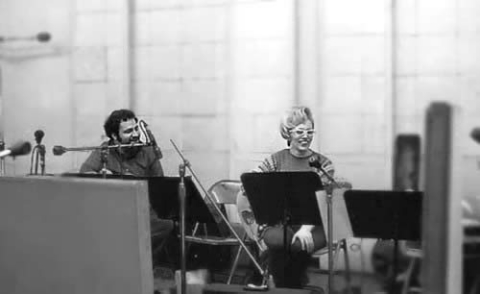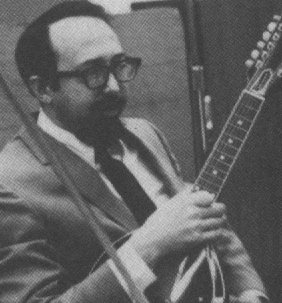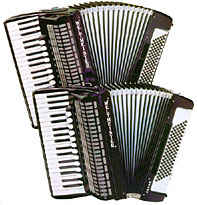
Anatomy of a recording session
Anatomy of a recording session: Cutting Wouldn't It Be Nice at Gold Star Studio
Retrieved from: "The Smiley Smile Message Board"
I've longed for several years now to be able to take a time machine back to 1965 and 66 to attend the Pet Sounds sessions. There is something about them that draws me in. So I've tried to put myself there by learning as much about what happened as I can. It's been terribly frustrating, as info is extremely difficult to find. Engineers that were there don't remember much, the musicians weren't concerned with certain details, etc, etc. Information is there, but very little of it is up to the specificity I'd desire.
So, for the benefit of others, and mostly for my own fun, I've put together this little piece to help us feel a little closer to those sessions. Now, it's fairly technical in terms of recording, so most people may not find it interesting from a personal standpoint, but hopefully somebody will like it.
I've divided it into three sections: The Players, The Set-Up, The Sound...
Keep in mind throughout that a lot of what I'm writing is educated speculation. Assume as much unless I say otherwise. If I know something for sure as a fact I will indicate that. If not, it's just my guesses aided by whatever info I could find. I try to indicate my sources wherever possible.
The Players
Sometime in the early part of the year 1966, likely January...possibly the 22nd, Brian Wilson presumably placed a call to a contractor, possibly Hal Blaine, or possibly straight through to one of the contracting services. Hal preferred to use Arlyn Henry's service.
Whoever it ended up being called the following sixteen players to appear at 7pm at Gold Star: Hal Blaine, Steve Douglas, Frankie Capp, Roy Caton, Al de Lory, Carl Fortina, Plas Johnson, Carol Kaye, Larry Knechtel, Barney Kessel, Jerry Cole, Frank Marocco, Jay Migliori, Bill Pitman, Ray Pohlman, Lyle Ritz...
Presumably, they start shuffling in sometime before 7, to get ready to work.
|
Barney Kessel, Guitar (of some sort, more on this later) |
Frank Capp, Percussion and Timpani |
Frank Marocco, Accordion |
|
Hal Blaine, Drums - studio drummer extraordinaire |
Jay Migliori, Baritone Sax |
Jerry Cole, Guitar |
|
Larry Knechtel, Piano |
Lyle Ritz, String Bass (Now a major ukelele star, btw) |
Plas Johnson, Tenor Sax |
|
Roy Caton, Trumpet (he's the one in back, w/glasses) |
Steve Douglas, Tenor Sax |
So, picture those players ambling in, saying a quick hello to Larry and Brian, and staring to get ready.
The Set-Up
I guess if you're picturing those players, it'd probably help to picture the place they were setting up in: Gold Star Studio.
Studio A was a small room. Not quite as small as Western 3, but cozy. Very roughly 20 ft. by 30 ft: http://www.goldstarrecordingstudios.com.

That's roughly 3/4 of the studio, and features many of the players here tonight. Disregard the way the musicians are set up in that picture, that was a one-off experiment. Hal learned early that he needed to have two drumsets. His drum tech would follow him around town and pre-set up the set at Hal's next session. Hal was not playing the monster 12 piece set he made famous later at this point. He likely had a four piece set up this evening, a bass drum, two tom-toms, and his Ludwig supraphonic chrome snare. The drums were usually set up in the back of the room.

Neither of those guys were at this session, but it gives you an idea of the back center of the studio. Note the little sound walls used to section off the instruments. This was an attempt at controlling the sound a little bit.
One thing that needs to be noted, is that for two reasons, Hal may not have set up in back for this song. For one, Brian liked Hal up front by the booth for easy visual contact, and Hal has confirmed that he set up close to the glass for Brian at Western, so he may have done the same at Gold Star.
Second, Hal had to wear headphones for the song, because the intro guitars were direct into the system and not audible in the studio. Hal was the only one wearing phones, at that time it was not that common for people to be wearing phones during a tracking sesion. So, I'm not positive if the studio would have been prepared to have a long 25 foot plus run of heaphone cable all the way to the back.
The drums were almost certainly mic-ed up with only two microphones. It's been hard to pin down, but according to three Larry Levine interviews, plus two "classic tracks" recollections about tracks made in that time period, I feel fairly confident that the standard set-up was a Neumann U67 over the set and an RCA 44 a few feet back from the bass drum.
The Percussion, played by Frankie Capp, would have consisted of what sounds like a tamborine, and a set of Timpani.

Frankie would likely be positioned somewhere near the drums. I have no idea what mics were used. Due to input limitations, it may very well have been one Condenser or Dynamic over the timpani that was also expected to pick up the percussion during the verses. There is photographic evidence of somebody using a Shure 545 on tambourine at Gold Star during a session, somewhere.
The basses would be close to the back, along the wall, likely the left wall. In this case, the bass players were Carol Kaye and Lyle Ritz.
Carol would have definitely been playing her Fender Precision Bass through her Fender Super Reverb Amplifier.
The Amplifier would have been captured by some sort of dynamic microphone. Really no way to know, but Gold Star seems to have favoured Electro Voice, either the 666 model or the RE-15. Shure 57s and 545 are other candidates.
Lyle Ritz' upright string bass had an extension on it that allowed him to go down to a low C if necessary. Little else is known. According to a few photos of one of Brian's two Pet Sounds sessions at Gold Star, it would appear that at one of them, a Sennheiser 421 was used to capture the String bass.

Larry Knechtel and Al DeLory would have been playing two seperate pianos. Apparently Gold Star was stocked with a small grand piano as well as an upright piano with hardened hammers to create the "Tack Piano" effect. Unlike these days, the piano was not mic-ed in stereo at all, obviously since mono was the final goal. So each piano would have had it's own mic. Again, some dynamic mic, probably (but not limited to) from the folllowing list:
For a rock session like this, it seems the mics would be in there pretty good, often with the lids of the pianos almost closed with the mics inside.
The keyboards on this session were likely somewhere to the left side of the room, towards the front middle.
There were four guitars on this date. Of those four, two were in the booth and two were out in the studio. For a typical Gold Star session, the guitar players sat with their backs against the right wall.

If they had amps, they would be facing them, so they could monitor their own sound.

Tonight, Bill Pitman is in the studio on guitar. After trying a few different ones for Brian, Brian decides he wants to hear the round, indistinct click of a strummed box guitar. Brian wanted a little percussive rhythm from the guitar, so rather than ampfliy the guitar, he mic-ed it acoustically.
I have no idea what kind of Guitar Bill was using, but it looked something like this:
And here are both in action, though not at Gold Star. Ray is the guy to the right, farthest right in the foreground.

Let's go in the booth to talk about the guitar players in there.
Tonight, Barney Kessel and Jerry Cole have plugged their guitars right into the console's inputs, bypassing the need for an amp. In addition to saving space in what was a crowded studio, it's also a great sound for 12-strings, especially when awash in Gold Star's famous reverb chamber.
Each guitarist would have plugged into some kind of tube, passive Direct Injection box, which would take their signal and make it more agreeable to the kind of volume the console works with.
Jerry was playing some kind of 12-string electric guitar. The Fender XII was the de facto studio standard:

But it could have been a Mosrite, or another guitar maker.
Barney Kessel was playing a 12-string instrument as well...however there is some debate about if it was just another 12-string guitar, or if it was something slightly different. One of Barney's kids mentioned how his father had played Mandolin on the intro. Brian seemed to hold the particular instrument used in some different regard than he would a regular 12-string. Plus, the sound is just kind of "woodier" than a normal electric 12-string.
The visual evidence has Barney playing one of these:

It appears to be a standard Gibson 12-string neck attached to a fairly standard Mandolin body. It's possible that if this instrument had a pickup, that is what Barney played on WIBN.
That's the rhythm section, next we'll move on to the Color Instruments.
Brian's classic Sax line-up was at the session. Steve, Jay, and Plas had been around Brian enough to know what he liked. Hopefully they were all friendly with each other, too, because due to input limitations, they likely would have had to crowd around one microphone. Brian would then adjust the balance by having one of them move in or move farther away.
I have Larry Levine on record more than once saying that the saxes typically got an RE-15 for the lot of them.
Roy Caton on trumpet may have been asked to share the mic with the sax section, or he may have got his own mic. There were a lot of players on tonights session, and they may have had to sacrifice somewhere. However, if we was on his own, he would have probably been on the venerable RCA-44, see Drums, above.
The horn section seems to have been placed in the right back on Brian Wilson sections. If you have the UM SOT Pet Sounds sessions, one of the CD liners has a picture in it that shows Steve Douglas in a cool hat in the position I've described.
And now, onto one of the most important parts: The accordions.
Accordions generate sound by bellowing air through a system of reeds. There are all kinds, from small to large. Frank Marocco and Carl Fortina were likely using the full Accordion with bass keys.

At some point during the evening, Mr. Marocco showed Brian that he could do this "triple bellow shake", a demanding technique that you can hear during the the final, slowed chorus. "It seems the more we talk about it..." Using the violin reed setting, it sounds as if a violin section is playing a vigorous sustained tremolo figure, or perhaps sounds as if Mandolins are being tremolo picked (which is probably why somebody started crediting mandolin players in the liners).
This is another instance where I have no idea what mic was used. Undoubtedly, they were both being mic-ed by the same microphone. In my heart, I tend to think it would have been an RCA 77, a classic ribbon mic. But I doubt there's any way to know.

The Sound
So, everybody's set up, comfortable with the music, microphones are set, and it's time to capture the sound.
All of the mics capturing the various instruments are plugged into the console, as are the two guitars that are bypassing microphones. The console then reduces the number of different elements to three outputs that feed the tape machine.
In the 60s, most consoles were made in-house by the resident equipment guru. In this case, Gold Star's go to guy was Dave Gold. He fashioned the mainframe of the console. At that time Bill Putnam's company, now known as Universal Audio, made the best input channels on the market, so Dave's console was built to accomodate those.
Here are the individual channel strips each microphone would have been plugged into: |
|
The console fully assembled would looks something like this: |
|
Actually, the above console is a lot more like the console at Western 3 than the Gold Star console, but so be it.
Here is the actual Gold Star Console: |
|
You can read more about the consoles of the 60s here: http://www.uaudio.com/webzine/2004/august/index4.html.
Now, Larry Levine has testified that their console was a 12 input console, meaning it could accomodate 12 mics. He also has said that they had an additional little sidecar mixer to help them out if they needed more than 12 inputs. I'm assuming that that system was in place by this time. Let's look at the input set-up:
Input #
|
If the sidecar mixer added a few more inputs, I'd imagine that would split the Timpani and Percussion/glock into two mics used.
Since Gold Star's console was built during the brief 3-track era, it probably has three program busses.
Busses are simply groupings of inputs that go to a common output. In other words, if you look at the above list, you are able to split it up into three parts that will go to seperate tracks of tape. This simply gave Brian a little more control if he needed to slightly adjust the volume of a certain element for the final mono bounce down.
The 610 input module generally had the buss selection setup as a three-position switch, labeled L-C-R, for "left, centrem and right." Since Stereo was not the goal here, those terms were arbitrary designations.
According to my ears, this is how Larry and Brian decided to group the inputs:
1. Horns. The Saxes and Trumpet got their own track, and typically Brian would isolate the horns. Since they aren't amplified electrically, it was crucial to have control over the volume. The horns wouldn't really leak onto the other tracks, unlike the electric instruments, guitars, basses, organs, which are all over all the tracks.
2. Main Rhythm. Here we have the meat of the rhythm section. Fender, Dano, and String basses, the Grand Piano, the Drums and Percussion. As I mentioned, you could have this track all the way down and still hear most everything on it except the piano and string bass.
3. Rhythm and Color. The accordions dominate this track. The Box Guitar and Tack Piano are also captured on this buss, and the 12-strings feature as well.
At this point, the decision would be made to add reverb to select inputs. There is a small knob at the bottom of each console input that adds reverb and subtracts the un-effected, dry signal.
In this case, it sounds like the accordions and 12-strings get the big treatment, with subtler reverb on other elements. The reverbed signal simply follows it's instrument down the same buss and onto tape.
Many of you have asked me about compression on the tracks. I have no idea if any way used at all, I doubt it. If it was used, chances are it would be at this point.
So, at this point, the musicians and Brian launch into 21 takes of the song, get a usable take on tape, and that's that.
Chances are Brian mixed the track to mono for reference that night.
Webmaster: Jos Megroedt | Website: http://www.josmegroedt.com/ |
This site is hosted by: http://www.hostingphotography.com/


























